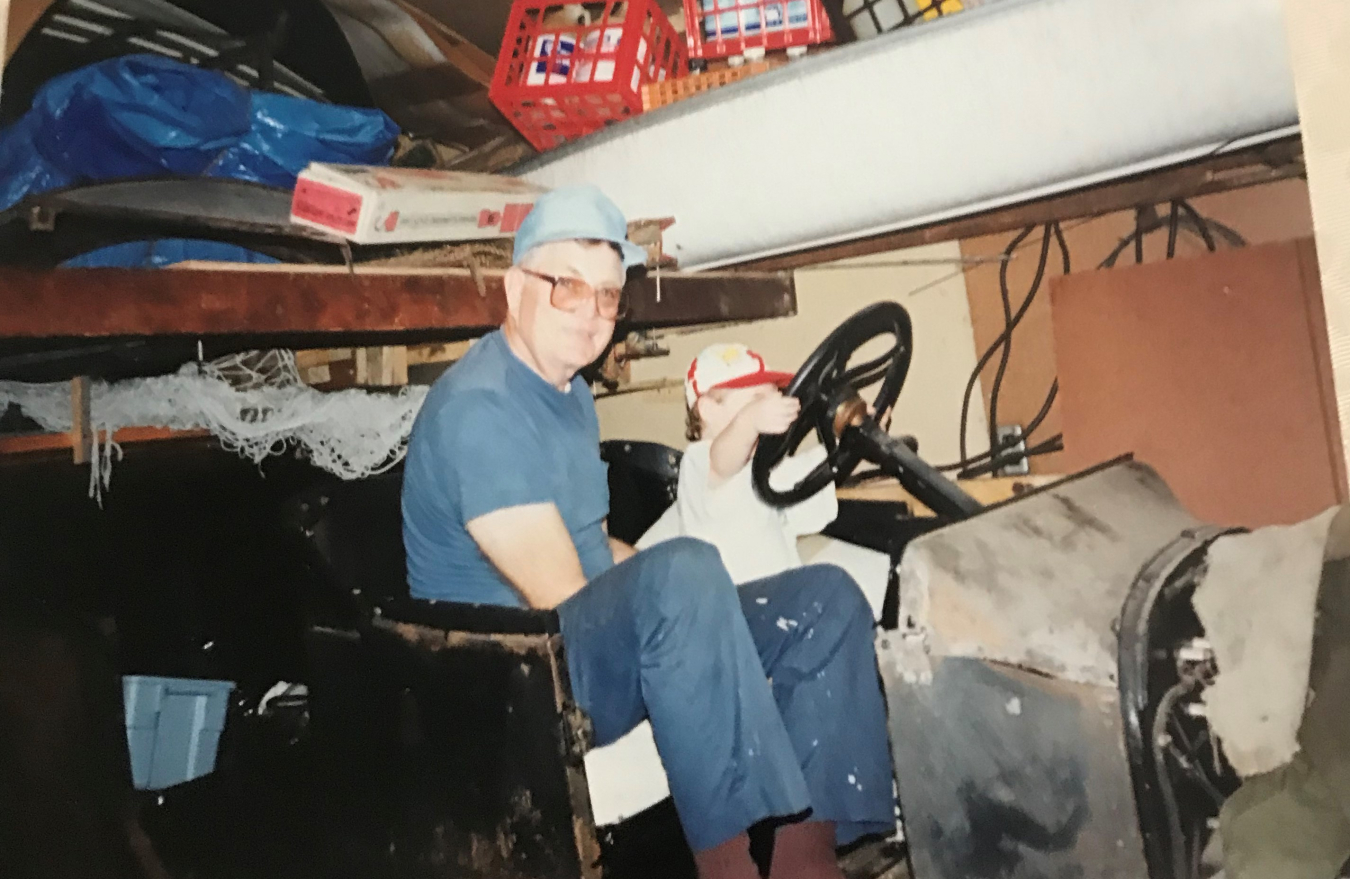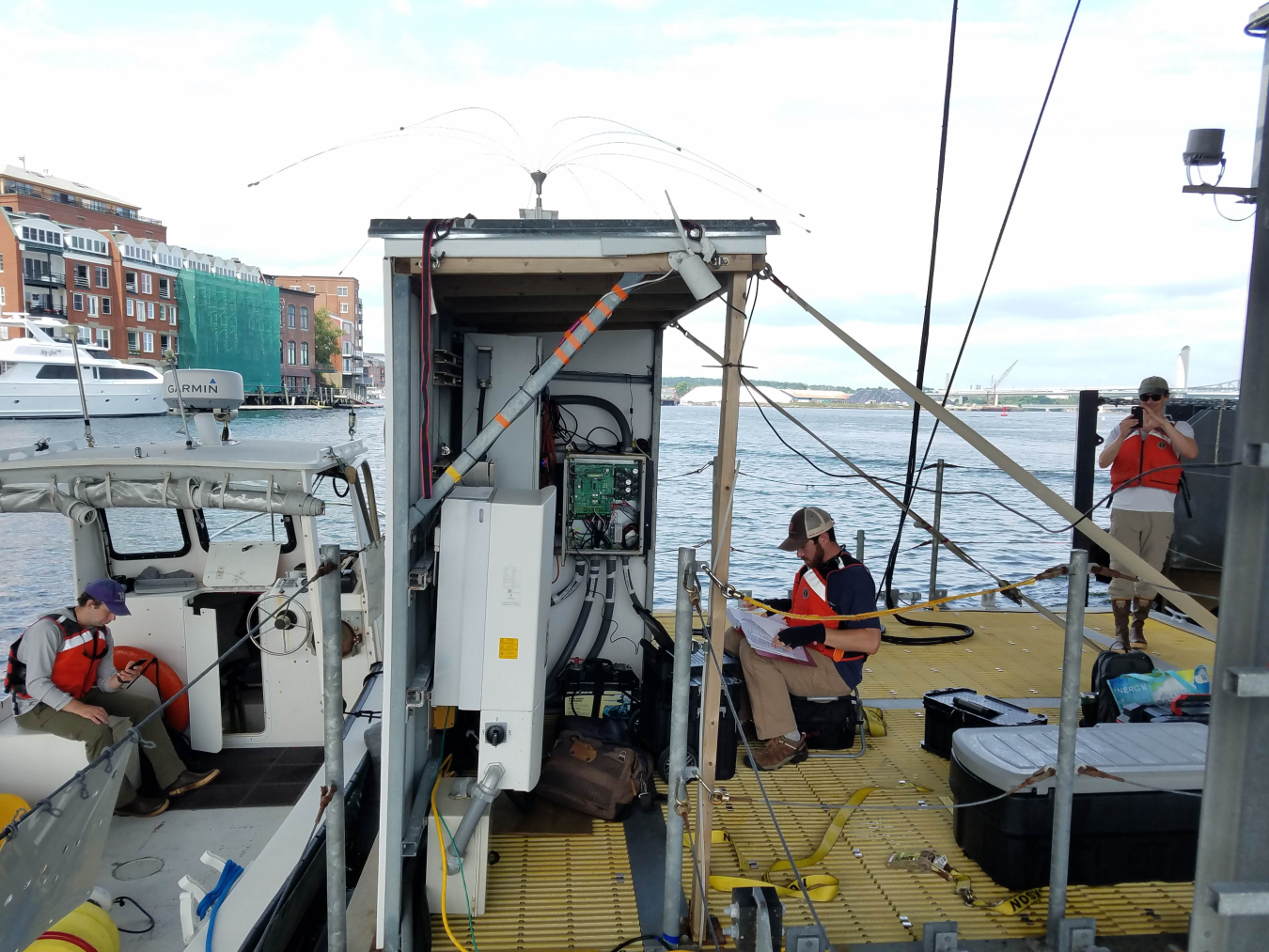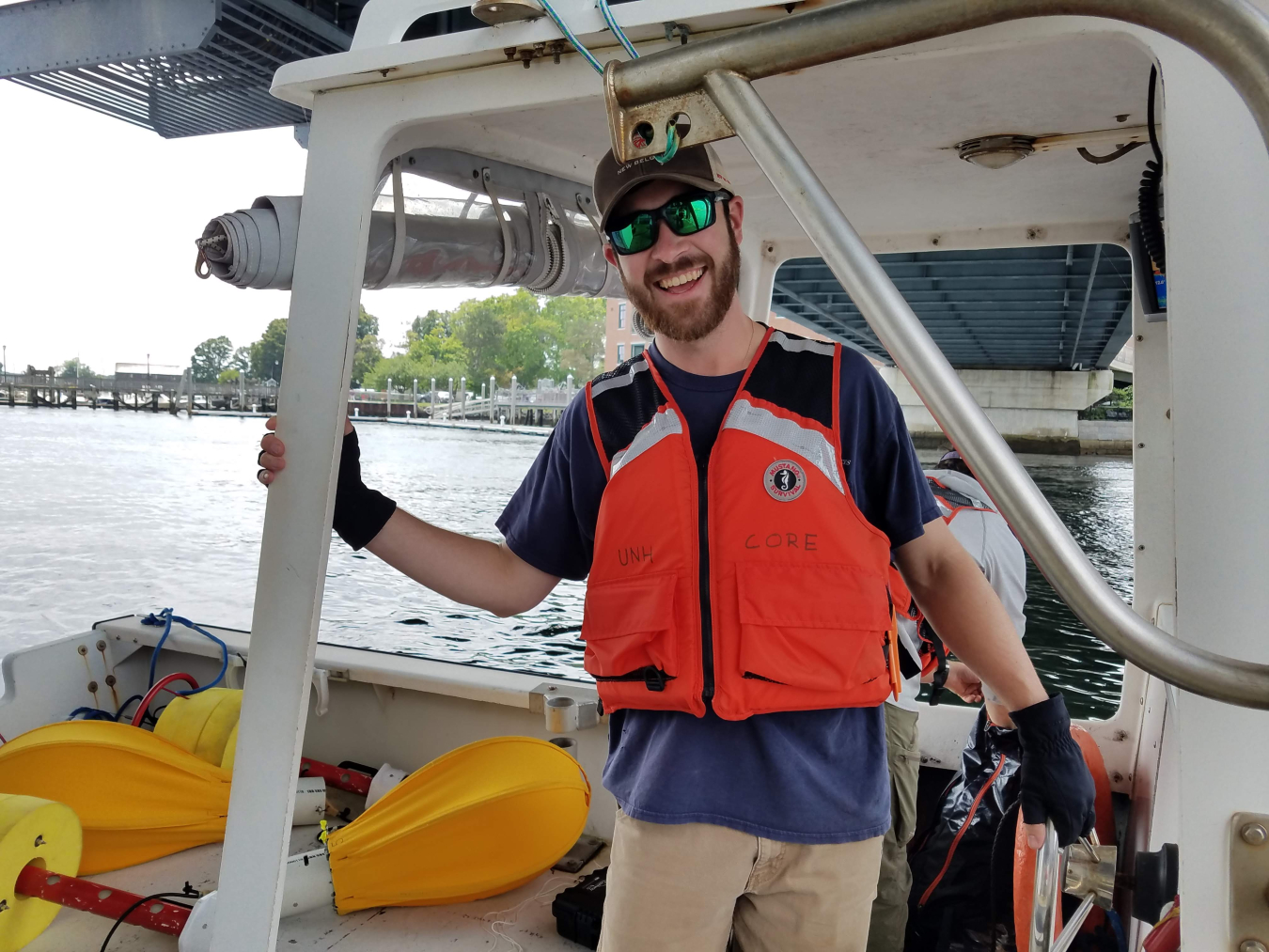As a water power intern at the National Renewable Energy Laboratory, Patrick O’Byrne constructs and studies tidal energy technologies, which are still relatively new but could help the country achieve its clean energy goals.
Water Power Technologies Office
June 13, 2023The concrete access tunnel was lit like a subway station and led straight into the side of the mountain. Patrick O'Byrne knew that much but little else. About 15 minutes earlier, he had entered the tunnel through an arched stone doorway ("like walking into a dwarven city from 'The Lord of the Rings,'" he remembers thinking). After hiking a half-mile in, he found himself alone at the center of a mountain, located alongside a lush river valley in western Massachusetts, with no idea where to go to do the job he was hired to do.
Then everything started to shake.
"I'm getting out of here," O'Byrne said to himself. But as he turned to flee, he bumped into a few workers, who explained that the mountain was not, in fact, collapsing. That ruckus was just the sound of the pumped storage hydropower plant, buried deep inside the mountain, rumbling to life.
Ripple Effect
WPTO's Ripple Effect series features individuals whose impactful work will help advance hydropower and marine energy technologies to achieve a clean energy future.
O'Byrne has lots of stories like this. After graduating college with an engineering degree, he joined what he calls a "collective beehive"—a swarm of workers who travel across the country to repair power plants and restore electricity when an outage occurs. He has visited and repaired generators in almost every kind of power plant, from coal-fired behemoths to pumped storage hydropower facilities, like the one in the Massachusetts mountain, and even waste-powered plants. One time, he helped load a 100,000-pound rotor onto a truck at midnight in pelting rain. Another time, he worked at a plant in the middle of the Nevada desert in a town with a rickety amusement park, glorious sunsets, and a Greek restaurant to die for.
But the job could be grueling, too. After a 100-day stretch of working back-to-back outages in Virginia and North Carolina, he came home to his long-term girlfriend (now his wife). "She barely even recognized me," he said. "Looking back, I miss the work, but it takes a toll."
Now, he's still doing the work, but he gets to do it from the comfort of his New England home. As a water power intern at the National Renewable Energy Laboratory (NREL), O'Byrne constructs and studies tidal energy technologies, which are still relatively new but could help the country achieve its clean energy goals.
"Being very aware of our climate needs and how grave a danger society is in," O'Byrne said. "I couldn't sit back and do nothing."
O'Byrne shared how being a serious child led him to pursue a career in engineering, why he sees tidal energy as an ideal renewable energy source, and what engineering challenge he hopes to tackle next.
Tell me about your origin story. Did you always know you’d become an engineer?

From an early age, my family expected me to do something in engineering. I was described as a serious child who was always working, digging holes, and finding ways to stay busy. I was lucky to grow up with my maternal grandparents as a big part of my life. My grandfather was very inquisitive and a lifelong learner. He could fix anything from their television to his first car, which he owned his entire life. From him, I got that initial hands-on experience and learned how to fix things. That’s why I chose engineering.
So, you set off on that engineering path. But you’ve also said you’re an environmentalist at heart. How did that happen?
Pretty much every summer as a kid, I went on vacations to Cape Cod in Massachusetts. That’s where I got my first interactions with the ocean and wild systems. I also grew up fly fishing for native brook trout on the local streams in upstate New York where I grew up. That gave me a firm connection to natural ecosystems. I believe that every species has equal rights to this world; they’re not here just for humanity’s benefit.
How did you end up pursuing a career in energy?
When I was an undergraduate student, I got an opportunity to intern at an energy company where I helped manufacture steam turbines. Steam turbines are used to convert thermal energy—supplied by fossil fuels, geothermal energy, and more—to mechanical energy. That mechanical energy is then used to drive generators that produce electrical energy at power plants.
This experience launched my career and interest in large-scale power generation service and repair. I traveled all over the country working at major power plant outages where there could be dozens or hundreds of U.S. contractors working together. I saw this incredible perspective of what humans could accomplish in a short period of time to upgrade and repair these facilities.
That sounds like an incredible experience. Why leave?
I worked at every style of generating facility, and you can really see the environmental impact of different types of energy technologies. That led me to explore graduate school opportunities, so I could make sure my work was contributing to my environmentalist values.
That’s when you joined the master’s program in the University of New Hampshire’s ocean engineering department. What did you work on there?

I had a unique opportunity to work on an applied research project in the field of tidal energy conversion technology through the Living Bridge project. The project includes a grid-connected tidal turbine installed on a floating platform under the Memorial Bridge in Portsmouth, New Hampshire. That turbine powers sensors that monitor the bridge structure and the environment while providing some energy to the local grid. The project also gives us a rare chance to collect data on a working tidal turbine in a relevant flow environment (meaning, the flow of a river) to quantify device performance and assess component reliability to improve the design of future turbines.
Very cool. Now, you’re working on the same project but for a different institution, right? How did you end up at NREL?
After I completed my master’s degree, my colleagues wanted me to stick around, at least for a little while. In 2022, NREL researchers outfitted one of the turbine’s blades with more sensors and developed additional data acquisition capabilities for the project. In the fall of 2022, I worked with the NREL team to install the upgraded components and operate the turbine to collect new datasets.
Now, as an intern at NREL, I can see the project through and learn programming skills at the same time. For the one-year internship, I’m helping to analyze that data and to outline the electrical upgrades required for future projects on the platform. This internship allowed me to continue to contribute to a project that I have already put a lot of time and effort into and to see it through.
Why put in all that effort—what makes that data so valuable?
Our world today is driven by data. In science and engineering, that data is used to validate physics-based models, which provide the lowest-cost path to predict technology performance. If you can model it, then you can avoid a lot of trial and error and save time and money. Datasets collected from real operating systems help improve existing models and make sure they accurately predict device performance in real conditions.
The beauty of the Living Bridge datasets is that they are publicly available on the Marine and Hydrokinetic Data Repository, which is maintained by NREL and funded by the U.S. Department of Energy’s Water Power Technologies Office.
What excites you most about tidal energy?
Tidal energy is really unique because you can predict the amount of energy at any given location hundreds of years in the future. That makes it an ideal renewable energy source that can be used to generate consistent baseload power to support the grid in suitable locations.
How about myths about renewable energy?
One misconception is that renewable energy sources cannot meet power requirements to support the existing grid because they’re variable. But it is possible to have a renewable-energy-powered grid. We have the resources to meet existing and future energy demand. In a fully renewable-powered grid, energy storage solutions—including battery storage, pumped storage hydropower, and emerging thermal energy storage technologies like molten salt—are key. These can be paired with variable sources, like wind and solar, and combined with predictable generation sources, like hydropower and tidal, to maintain a consistent supply of energy.

What advice do you have for folks who, like you, can’t sit back and do nothing about climate change?
There are so many ways we can all make a difference by, for example, controlling our own emissions, driving market changes with our purchases, and reducing waste. But simply raising the next generation to be more in tune with sustainable practices will go a long way in combating climate change.
In an ideal world, what would you hope to accomplish?
In an ideal world, I would want to keep moving renewable energy technologies toward commercialization to help offset carbon-based energy production. After my internship, I’m planning to work in the offshore wind industry here on the East Coast. It’s a great renewable resource, and it’s local to where I live now. I think I can make a positive impact.
Catch up on WPTO’s other Ripple Effect profiles and the Office of Energy Efficiency and Renewable Energy’s Clean Energy Champions.
And stay in the know with WPTO! Receive the latest information on funding opportunities, events, and other news by subscribing to the Hydro Headlines and Water Column newsletters, as well as the comprehensive Water Wire newsletter.

